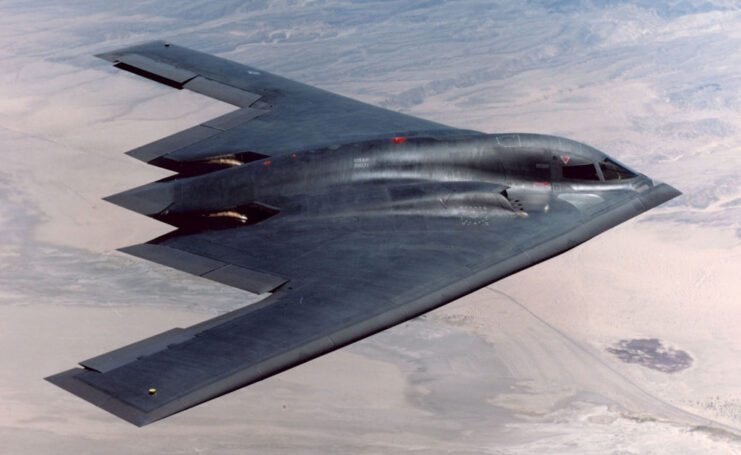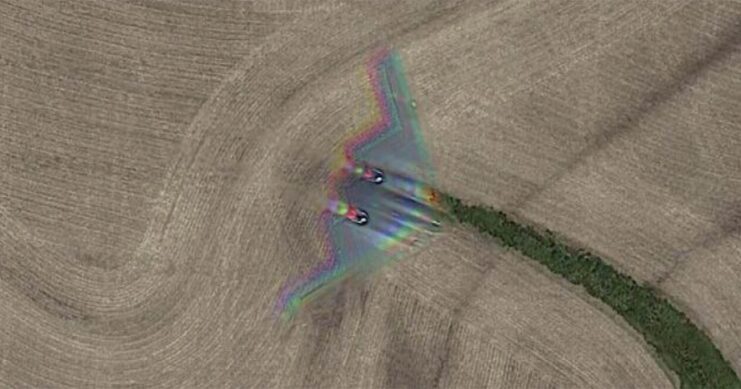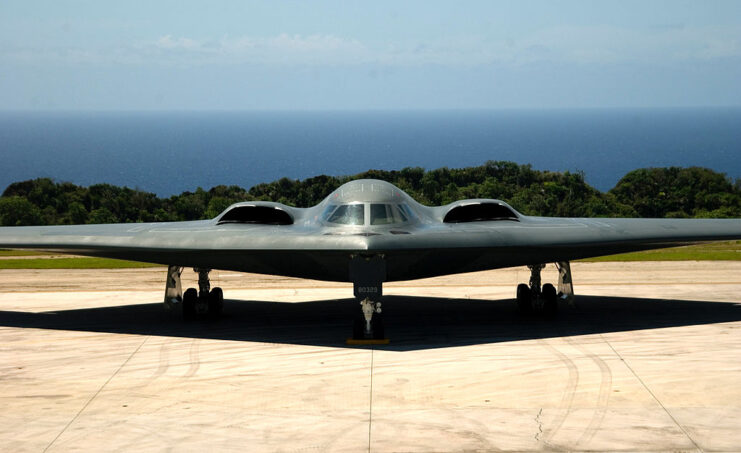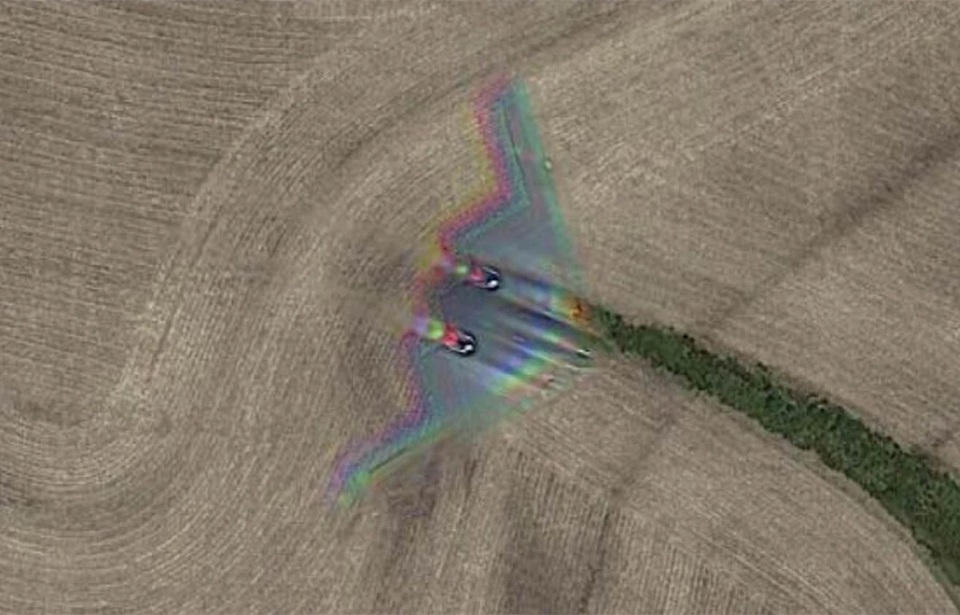The Northrop Grumman B-2 Spirit stands as one of the most sophisticated stealth bombers ever created. Its distinct design is intended to minimize its radar signature, yet this does not mean the aircraft is invisible to cameras. This was proven in 2021 when a Reddit user noticed a B-2 had been spotted on Google Maps.

The existence of the image of the B-2 Spirit on Google Maps came to light in late December 2021, when Reddit user Hippowned revealed their discovery on the website. The blurry image of the stealth bomber flying over a field about 50 miles east of Kansas City, Missouri was captured by Google’s satellite cameras.
The exact coordinates were 39°01’18.5”,-93°35’40.5”, and the shades of blue, green and red were the result of the satellite cameras’ process of taking photos, before turning them into a clear image.
Unfortunately, the snaps in question have since been updated on Google Maps and now only show a barren field.

The B-2 Spirit operates out of Whiteman Air Force Base, Missouri, located just 20 miles north of the location captured by Google Maps. Between 1987 and 2000, 21 of these aircraft were constructed with the goal of providing the US Air Force with a strategic bomber featuring advanced stealth technology capable of penetrating even the most robust anti-aircraft defenses.
The B-2 entered service in 1997 and saw its first combat action in 1999 during the Kosovo War, later participating in operations in Afghanistan, Iraq and Libya. It is expected to be retired in the early 2030s, with the Northrop Grumman B-21 Raider set to take its place.

This wasn’t the only time a B-2 Spirit was caught on Google Maps. In 2022, it emerged that sleuths had come across a second image, this time of a crashed stealth bomber at Whiteman Air Force Base. The incident occurred in September 2021, when the Spirit of Georgia made an emergency landing at the base, going off the runway and landing in the grass.
Want War History Online‘s content sent directly to your inbox? Sign up for our newsletter here!
The $10.1 million crash was later determined to be the result of “microcracking” in the hydraulic connections of the aircraft and faulty landing gear springs.
